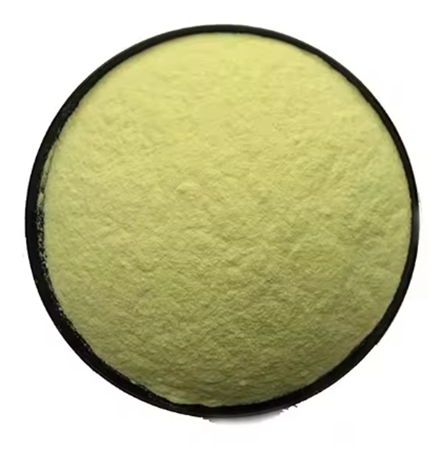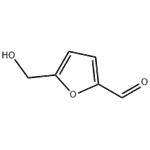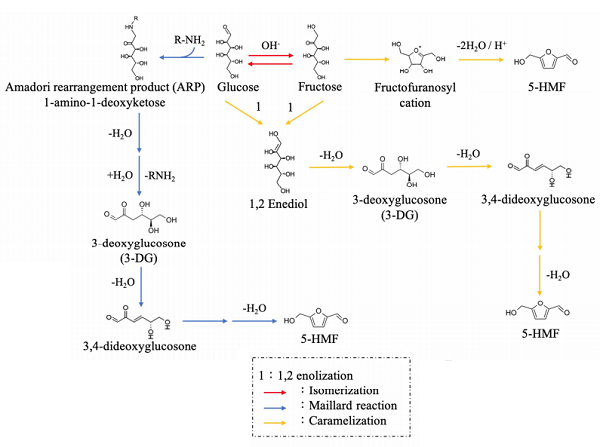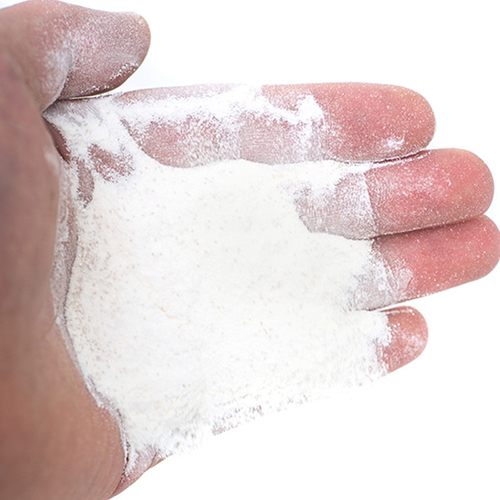5-Hydroxymethylfurfural: A Versatile Compound in Chemical Research
5-Hydroxymethylfurfural(HMF) is a white low-melting solid (although commercial samples are often yellow) which is highly soluble in both water and organic solvents. The molecule consists of a furan ring, containing both aldehyde and alcohol functional groups.

Applications
5-Hydroxymethylfurfural is classified as a food improvement agent and is primarily being used in the food industry in form of a food additive as a biomarker as well as a flavoring agent for food products. It is also produced industrially on a modest scale as a carbon-neutral feedstock for the production of fuels and other chemicals.1
Biomedical
A major metabolite in humans is 5-hydroxymethyl-2-furoic acid (HMFA), also known as Sumiki's acid, which is excreted in urine.
5-Hydroxymethylfurfural bind intracellular sickle hemoglobin (HbS). Preliminary in vivo studies using transgenic sickle mice showed that orally administered 5HMF inhibits the formation of sickled cells in the blood. Under the development code Aes-103, HMF has been considered for the treatment of sickle cell disease.
Toxicological effects
5-Hydroxymethylfurfural(HMF), a heat-induced food toxicant, is formed in many food items, and causes several adverse effects in animals. HMF has been found in a wide variety of food products like dried fruit, fruit juice, caramel products, coffee, bakery products, malt and vinegar. It has been also detected in cigarette smoke and chewing tobacco. The toxicological effects of HMF have been demonstrated in several experimental animals and in cultured mammalian cells. The daily human intake of HMF was reviewed by Husøy et al. and ranged from 30 and 150 mg/person/day, a dose much higher than that of other food heat-borne toxicants like furan and acrylamide. An estimation by the Federal Institute of Risk Assessment showed a range from 4 to 30 mg HMF/person/day.2
1. Huber, George W.; Iborra, Sara; Corma, Avelino (2006)."Synthesis of Transportation Fuels from Biomass: Chemistry, Catalysts, and Engineering". Chem. Rev. 106 (9): 4044–98.
2. Mayada R Farag. “The Toxicological Aspects of the Heat-Borne Toxicant 5-Hydroxymethylfurfural in Animals: A Review.” Molecules 25 8 (2020).
References:
[1] GEORGE W. HUBER A C Sara Iborra. Synthesis of Transportation Fuels from Biomass: Chemistry, Catalysts, and Engineering[J]. ChemInform, 2006, 37 52. DOI:10.1002/chin.200652240.[2] MAYADA R FARAG. The Toxicological Aspects of the Heat-Borne Toxicant 5-Hydroxymethylfurfural in Animals: A Review.[J]. Molecules, 2020, 25 8. DOI:10.3390/molecules25081941.
You may like
Related articles And Qustion
See also
Lastest Price from 5-Hydroxymethylfurfural manufacturers

US $0.00/kg2025-10-22
- CAS:
- 67-47-0
- Min. Order:
- 1kg
- Purity:
- 99%min
- Supply Ability:
- 20tons

US $10.00/kg2025-04-21
- CAS:
- 67-47-0
- Min. Order:
- 1kg
- Purity:
- 99%
- Supply Ability:
- 10 mt





